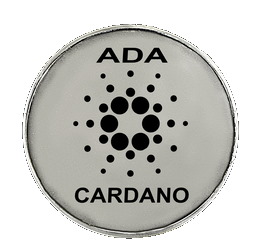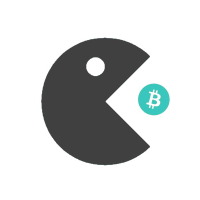Cardano
Cardana (ADA) is a third generation Smart Contract digital currency, specifically designed to resolve the inefficiencies of the previous generations of blockchains with open governance. This project is a more complex concept than say a cryptocurrency like the Tether Coin which is pegged to real world money, but not that much more difficult!
The maximum supply of Cardano is 45 billion (45,000,000,000).

It uses a highly efficient Proof of Stake (PoS) protocol that allows for a large number of transactions to be processed at one time. The proof of stake protocol is quoted to be up to 4 million times more efficient than Bitcoin’s Proof of Work (PoW) protocol. Other POS coins include DOT and Stellar. Head to our ‘What is Polkadot?‘ page to find out more.
Cardano Chart
Cardana is founded on 2 core principles
- All the science behind the development of Cardano is peer reviewed prior to implementation
- All the software engineering is implemented as high assurance code, which uses the same type of techniques used when a failure in a system would lead to a fatality (eg aircraft engineering etc)
The technology behind Cardano is under constant evolution with a very active roadmap. To support this very active roadmap Cardano has a team of 250 full time researchers/developers. All research goes through a peer review process to prove all the development work before being added to the Cardano base.
One of the key goals behind Cardano is to solve the issues in generation one and two digital currencies. The key areas that the product roadmap is focused on is solving are following:
- Scaleability
- Interoperability
- Sustainability
Scalability
To solve scalability, Cardano is resolving challenges in three areas:
- How many transactions per second the platform can process.
- The volume of data that is needed to move around the network to support the speed of transaction processing
- How to handle the mass of data it will accumulate…proving the validity of all transactions since the Genesis Block (the name given to the first block created). This isn’t currently priortised by the Cardano team, as
Scalability: Transaction Processing
To improve transaction processing, the is how efficient the validation process is (ie the proof of stake process). Cardano have developed a new peer reviewed PoS protocol called Ouroboros, that is designed in a modular fashion to be future proof. It can evolve over time, in other words.
So the Cardano PoS protocol works as follows.
- Unlike Bitcoin, where miners race to compete for a reward, the Cardano network chooses which nodes can mine new blocks. These nodes are called slot leaders.
- Cardano divides time into epochs, and these then split into slots. Each slot represents the amount of time to mine one block. The slot leader is responsible for creating a block.
- To create a block, the slot leader listens for transactions, verifies them and adds them to the block.
Cardano PoS scalability comes from two key factors, Firstly they can increase the number of slots in an Epoch and secondly they can run multiple Epochs at one time.
Scalability: Network Bandwidth
The challenge with bitcoin is every node in the network keeps a copy of the entire blockchain. As the number of transactions increase the amount of replication required across the network increases dramatically to keep all the nodes synchronised.
To solve this issue, Cardano is looking to break the network into a set of sub networks and each node is assigned to a subnetwork that they belong to.
Interoperability
One coin to rule them all
Cardano is designed with the knowledge that it doesn’t exist in a vacuum, and that there will be a myriad of other digital currencies operating in parallel with it. Right now, all of these currencies operate independently of each other with different rules. Cardano is seeking to resolve this by becoming the internet of blockchains, allowing people to freely move coins across different ecosystems.
Playing nice
Finally, Cardano looks to be flexible with regulators and banks by allowing transactions to contain additional data like traditional banking information, so for example who created the transaction?, who sent it?, and who is receiving it?
This should greatly increase acceptance by banking authorities. Attaching this information is currently seen as optional.
Sustainability
When companies look to launch a new blockchain there is normally an Initial Coin Offering (ICO) to fund the development. The challenge is that over time this funding is eroded and the developers need to source additional funding.
Cardano is approaching this problem from a different angle. They are planning to introduce the idea of a treasury to ensure that the Cardano project is sustainable. The idea is that every time a transaction is processed on the network a small portion of the transaction fee is allocated to the treasury.
When a developer wants to get funding for a new initiative the community reviews the developer’s proposal and then votes on which one they’d like to move forward.
